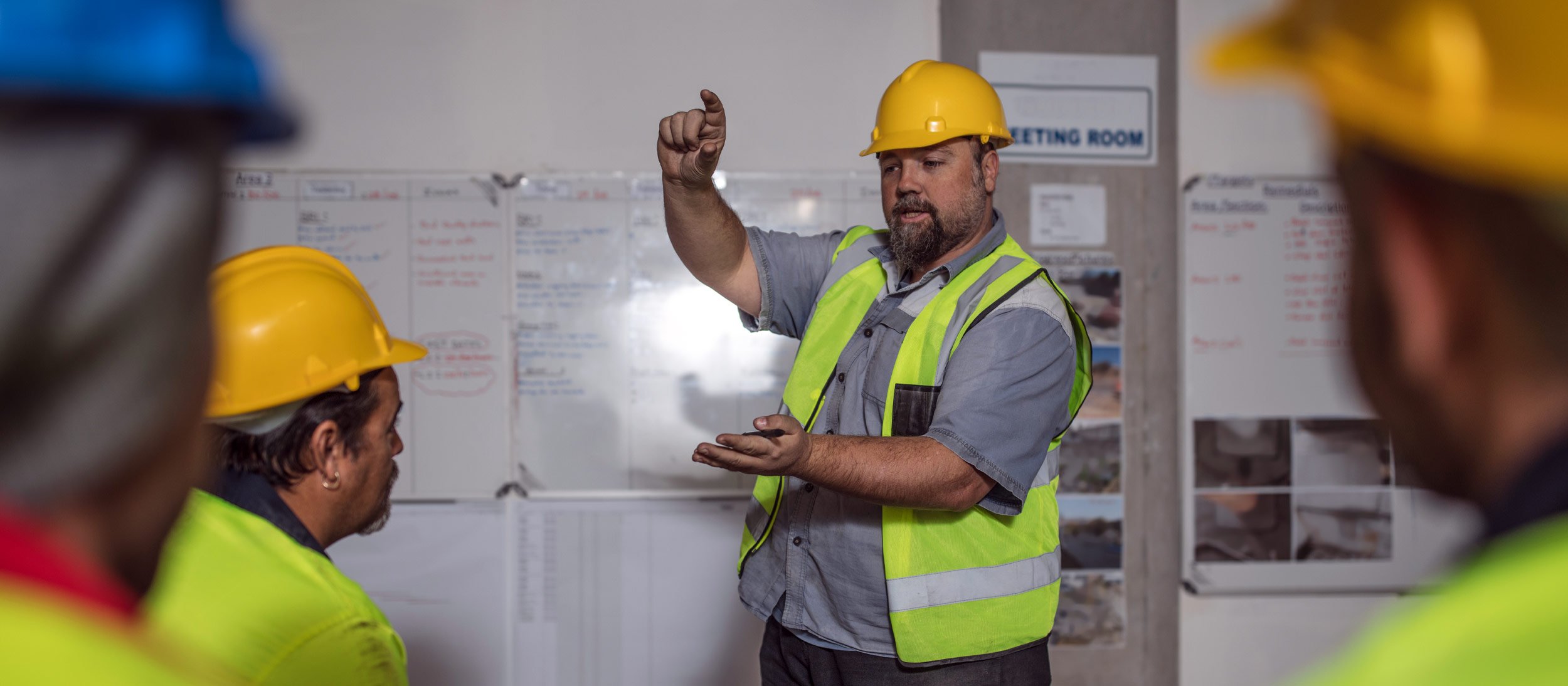Claim Center
We're in the business of helping people, providing prompt and personal claims service when you need us the most.
Call 877-242-2544 anytime, day or night, to report claims. You may also contact your independent agent to report a claim.
- Personal & Business ClaimsLearn More
- Life ClaimsLearn More
- Workers' Compensation ClaimsLearn More
Plan & Protect
Reduce risks and enjoy peace of mind with these tips and insights to protect what matters most.
Contractors: Focus on Safety to Attract Talent

Toolbox talks and regular refreshers help reinforce safety training.
One of the most urgent issues facing construction contractors is the ability to attract and retain talent. Several factors may be in play, including the perception that construction can be a dangerous vocation. One way you can attract and retain top talent is to invest in and provide a culture of safety:
- Establish a work environment that engages management and supervision in the safety process and has them leading the way.
- Go beyond training to avoid hazards; instead, aim to find and remove hazards when possible.
- Engage workers as part of ongoing improvement in keeping them and their workplace safe.
First Impressions
Allow leadership to present and instill the importance of workplace safety at both the initial orientation and through continual training and improvements. This is paramount to protecting new workers. As you plan training and orientation, make it specific to your workplace so that you send a strong and clear message on the value of safety. This is an opportunity to set expectations about your company’s safety culture.
Orientation and Safety
The safety orientation should be the introduction of the safety process already established for your company and safety culture on your jobsite. It not only alerts new employees to hazard exposures but establishes the desire to remove those hazards as a team effort. Some common elements of an effective orientation and safety program include:
- Reinforcing management’s commitment to a safety culture.
- Informing workers of their rights under Occupational Safety and Health Administration regulations: they have the right to a safe workplace and the right to refuse unsafe work.
- Conducting hazard assessments that are reviewed by all levels within the organization.
- Engaging workers to participate in the identification and reporting of hazards to supervision.
- Providing site-specific information, including identifying present and expected hazards and how they are to be handled.
- Outlining required personal protective equipment.
- Knowing what to do in an emergency.
Ongoing training with daily safety huddles and toolbox talks should continue to reinforce those ideas. Open communication and follow-up are critical to ensure that everyone understands risk and works to make risk prevention second nature – not just a forced obligation. It is the full team's job to make sure all go home safely at the end of the day.
This loss control information is advisory only. The author assumes no responsibility for management or control of loss control activities. Not all exposures are identified in this article. Contact your local, independent insurance agent for coverage advice and policy service.